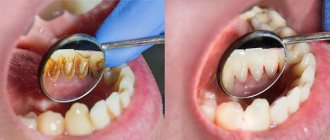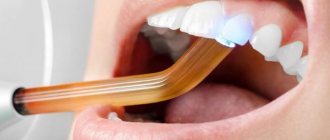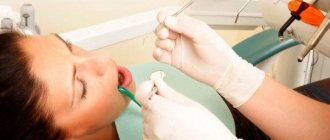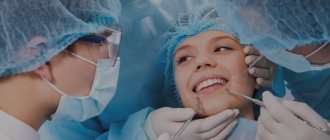Anatomy and functions of the trigeminal nerve
The trigeminal nerve belongs to the class of mixed nerves, including both sensory and motor fibers.
It is the largest of the 12 cranial nerves. This name of the nerve is due to the presence of three branches - the orbital, maxillary and mandibular nerves. When one of the branches of the trigeminal nerve is damaged, a sensitivity disorder occurs in the area of innervation. When the trigeminal nerve root is damaged, sensitivity disorder is observed in the areas of innervation of all three branches.
Inflammation of the trigeminal nerve: types
Trigeminal neuralgia is of two types: true or secondary. True neuralgia is a disease that occurs due to compression of a nerve or if its blood circulation is impaired. Secondary neuralgia is usually a symptom of some underlying disease.
Most often, neuralgia occurs in one of the three branches of the facial nerve on one side of the face, but there are cases when two or three branches of the nerve become inflamed at the same time. Inflammatory processes are possible on both sides of the face.
Causes of trigeminal neuralgia
Trigeminal neuralgia occurs due to various reasons, among which the following are common:
- Compression (squeezing) of the trigeminal nerve by vessels or neoplasms.
- Pathologies of the nervous system (multiple sclerosis, meningitis).
- Malocclusion.
- Inflammatory pathologies of the nasal sinuses.
- Injuries.
- Hypothermia.
- Viral or bacterial infections of the upper respiratory tract.
Damage to the trigeminal nerve after tooth extraction
There is also trigeminal neuralgia of odontogenic origin. In this case, the pathology is caused by diseases of the teeth, jaws or oral cavity. Sometimes such complications arise after tooth extraction.
You can suspect damage to the facial nerve after tooth extraction if pain occurs in the eye area, temporal area or nose. In this case, the trigger for pain is harmless procedures or events, for example, a gust of wind or brushing your teeth.
Important! Don't be afraid to have teeth removed when it is medically necessary. Damage to the facial nerve during tooth extraction is extremely rare. But complications in the absence of proper dental treatment occur much more often. Therefore, it is important to trust an experienced doctor, with whom the likelihood of complications is minimized.
There are two main reasons why the trigeminal nerve is damaged due to tooth extraction:
- Diagnostic error . Sometimes neuralgia is so successfully disguised as a toothache that the doctor makes an erroneous diagnosis. Instead of treating trigeminal neuralgia, the patient is treated or the tooth is removed. At the same time, the pain intensifies.
- Difficulties in dental treatment . Sometimes, when treating severe stages of pulpitis, the nerve is often injured, which causes neuralgic symptoms.
Complication after implantation
Among the complications encountered in implant dentistry is damage to the trigeminal nerve. In this case, the nerve fibers are affected mechanically (during the procedure), due to the inflammatory process or against the background of an infectious complication.
Damage to the trigeminal nerve during implantation can occur at various stages of the procedure, starting with anesthesia. Careful diagnostics using computed tomography, as well as surgical templates, will minimize the risks of complications in implantology.
Complications from the trigeminal nerve also occur with an incorrectly selected implant, when the risk of injury to nerve fibers increases. Increased pressure on the implant during installation is also fraught with damage to the trigeminal nerve.
Important! According to statistics, the likelihood of complications from the trigeminal nerve during implantation is less than 3%. At the Center of Israeli Dentistry this figure is even lower. In this case, an experienced team of doctors and careful preparation for the implantation procedure can minimize the likelihood of complications. Therefore, our patients do not need to worry about the consequences.
Symptoms of the disease
Symptoms of the pathology include:
- Severe pain in the face . Often the pain syndrome covers the area of the upper and lower jaw. Often this type of pain misleads a person, masquerading as toothache. However, after dental treatment the pain does not go away.
- Facial muscle spasms and changes in skin sensitivity . The spasms cause the person to have difficulty communicating or chewing.
- Facial asymmetry . In particular, the asymmetry is clearly visible when talking or smiling.
- Shooting pain attacks.
Concomitant symptoms of trigeminal neuralgia include increased salivation, insomnia, anxiety, changes in taste, local or general increase in body temperature.
Inflammation of the trigeminal nerve: treatment methods
Trigeminal neuralgia is difficult to treat. In most cases, treatment of neuralgia becomes long-term and multifaceted.
If the case is severe, when attacks of pain last more than a day, the patient is sent for treatment to the neurological department of the hospital. There, active therapy is carried out to interrupt the pathological chain and prevent the disease from becoming chronic. For this purpose, anti-neurotic and hormonal drugs are prescribed.
In addition to medications, physiotherapy procedures are prescribed:
- Electrophoresis.
- Ultrasound.
- Acupuncture.
- Treatment with pulsed low-frequency currents.
- Laser procedures.
- Electromagnetic treatment.
- Ultraviolet and infrared radiation.
How to treat trigeminal neuralgia
Treatment of this pathology is carried out by conservative and/or surgical methods. Preference is given to conservative therapy, and surgery is used in extreme cases when medications and non-drug methods do not bring the desired result.
The treatment regimen for the trigeminal nerve is selected taking into account diagnostic parameters. Doctors also take into account the patient’s health and condition. The main goal of therapeutic measures for this pathology is to eliminate pain and prevent relapses.
Conservative treatment
Conservative therapy for neuralgia boils down to taking medications, as well as physiotherapeutic procedures. The first drugs for trigeminal neuralgia began to be used at the beginning of the last century. The most popular was phenytoin. However, since the 60s, carbamazepine began to be used for these purposes. When using this drug, pain relief can be achieved in 70-75% of cases.
Drug therapy
Today, three types of medications are used for this pathology:
- Anticonvulsants are medications that eliminate pain and dull the hypersensitivity of facial nerve fibers to irritating factors. Anticonvulsants are used for epileptic seizures to relieve muscle cramps. However, they are also effective for neuralgia.
- Antispasmodics are medications that help relax smooth muscles. Thus, antispasmodics relieve secondary pain syndrome.
- Neuroprotectors are drugs that have a protective effect on nerve fibers and cells.
Let's look at some drugs for the treatment of trigeminal neuralgia:
- Phenytoin . Today this drug is used for exacerbations. Prescribed by intravenous injection.
- Baclofen . This medicine belongs to the group of muscle relaxants.
- Valproic acid preparations. Prescribed both in tablet form and in the form of intravenous injections.
- Tizanidine . It is a centrally acting muscle relaxant. For neuralgia, it is prescribed orally.
- Vitamins . For neuralgia, as well as other pathologies of the nervous system, B vitamins are prescribed. These vitamins take part in the metabolic processes of nerve cells, contributing to the speedy restoration of the functions of nerve cells.
As practice shows, painkillers for trigeminal neuralgia are ineffective. Taking analgesics for this pathology is also undesirable for the reason that the patient may experience severe headaches while taking them. This is due to the patient’s expectation of quick pain relief, which is why they may be taken excessively. Against the background of overdose, headaches often develop, which are called abuse headaches.
Physiotherapeutic methods for treating trigeminal neuralgia
Physiotherapy is a complementary therapeutic component that promotes the rapid restoration of nerve fibers. For neuralgic disorders, the following physiotherapeutic techniques are often used:
- Magnetotherapy is a technique that has a stimulating effect on blood microcirculation in the target area. In addition, the magnetic field created during magnetic therapy has analgesic and muscle relaxant effects. Muscle tension is relieved, which improves the appearance of the face.
- Ultrahigh frequency therapy (UHF) is a procedure that activates normal neuronal responses to external stimuli. In addition, UHF also has a neuroprotective effect. It has been established that UHF courses help eliminate the inflammatory process and reduce pain.
- Laser therapy is a method of physiotherapeutic treatment that improves microcirculation and also promotes the restoration of nerve tissue. In addition, laser radiation of a certain wavelength helps eliminate spasms, pain and inflammation.
- Diadynamic currents (DCT) is a procedure that improves blood circulation in the target area. DDT also improves lymph flow and local defense mechanisms.
Surgery
If conservative therapy is ineffective, then trigeminal neuralgia can be treated with surgery. The essence of surgery is to remove the structure that is compressing the nerve. Often it is the vessel that is exerting compression. In other cases, they resort to removing the nerve to relieve the patient from pain and inflammation.
Surgeries for trigeminal neuralgia are often minimally invasive. These are interventions through small punctures. Such operations are not accompanied by heavy blood loss, and after them the patient recovers much faster. In some cases, stereotactic radiosurgery is also used instead of “classical” surgery. In this case, the removal of target structures is carried out by a beam of high-energy radio waves.
How to treat trigeminal neuralgia at home
Doctors strongly discourage self-medication. This is how patients waste valuable time. Often people seek help with advanced forms of damage to the trigeminal nerve, which requires radical (surgical) interventions.
Inflammation of the trigeminal nerve: identifying and eliminating the causes
Treatment of inflammation of the trigeminal nerve begins with the elimination of pain symptoms and alleviation of the patient’s general condition. For treatment to be effective, it is very important to correctly identify the causes that triggered the onset of the disease. Specialists conduct a full-scale examination of the patient, and, if necessary, prescribe various tests.
- If an x-ray reveals that the cause of neuralgia is an incorrectly installed filling, then the tooth must be retreated.
- When it is discovered that the trigeminal nerve is affected by inflammation in the gums, doctors focus on stopping them.
- If pulpitis is detected, the nerve is removed from the tooth and the canals are sealed.
- If inflammatory processes are detected in the sinuses, they are eliminated.
- After consultation with specialized specialists (infectious disease specialist, endocrinologist, allergist, etc.), treatment is carried out depending on the detected diseases.
Very often, in order to cure neuralgia, it is enough to improve the functioning of the blood vessels in the brain, cure inflammation in the sinuses, relieve the patient from a nervous condition or insomnia, and, if necessary, conduct a course of antiviral treatment.
If this is not enough, then more thorough treatment is prescribed.
Treatment of neuralgia with tablets begins with carbamazepine (finlepsin, tegretol). First, the minimum dose of the drug is prescribed, then it is increased and gradually brought to the most effective one. Carbamazepine cannot be used for a very long time, because its effectiveness gradually decreases, in addition, the drug has a large number of side effects.
Trigeminal neuralgia can also be treated with other drugs:
| Anticonvulsants | Diphenine or phenytoin |
| Medicines based on valproic acid. | Depakin, convulex, etc. |
| Drugs that compensate for amino acid deficiency | Pantogam, baclofen, phenibut |
| Medicines to relieve acute pain symptoms during crises | Sodium hydroxybutyrate, administered intravenously in glucose solution |
| Additional agents (amino acids) that are inhibitory mediators of the central nervous system | Glycine |
| Auxiliary therapy (antidepressants as well) dulls the perception of pain, relieves depression, and makes adjustments to the functional state of the brain. | Amitriptyline |
| Neuroleptics | Pimozide |
| Tranquilizers provide relief | Diazepam |
| Vasoactive drugs (for patients who suffer from vascular diseases) | Cavinton, trental, etc. |
| To relieve pain at the acute stage of inflammation, local anesthetics are used | Lidocaine, chloroethyl, trimecaine. |
| Glucocorticoids (in the presence of allergic reactions or autoimmune processes) | Prednisolone, dexamethasone |
Dental restoration for neuralgia
Some patients have to deal with several problems at once. For example, restoration of teeth against the background of neuralgia. In this situation, it is important to understand the nuances in order to understand the correct algorithm of actions.
The treatment process for damage to the trigeminal nerve is long. The patient will have to work for a full recovery. In particular, requirements are also imposed on dentures if the patient does not have his own teeth. This is due to the need to maintain optimal condition of the masticatory apparatus. Indeed, if facial expressions are impaired (which is accompanied by neuralgia), the chewing process is also disrupted. The denture must be made of high-quality, high-strength materials. It should not cause discomfort to the patient, for example, falling out of the mouth.
If the patient is faced with the need to restore teeth due to neuralgia, then in the acute stage of the disease, restoration work should be abandoned for at least 3 weeks. If during this time the problem has been resolved, then you can contact the dentist with a question about restoring the dentition. As for the types of prosthetics for neuralgia, if possible, the patient is recommended to have implantation. Removable dentures, due to their size and care features, have a number of disadvantages compared to fixed ones.
Remember that in any situation, thanks to modern advances in dentistry, you can find a way out. The team of doctors at the Center for Israeli Dentistry will create a competent treatment plan that is optimal for each patient.










